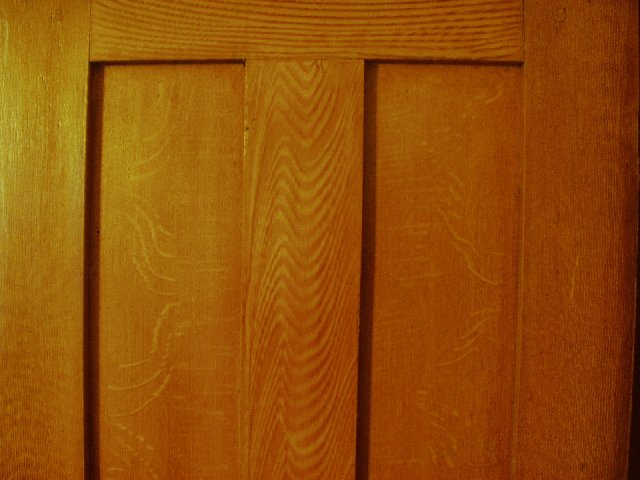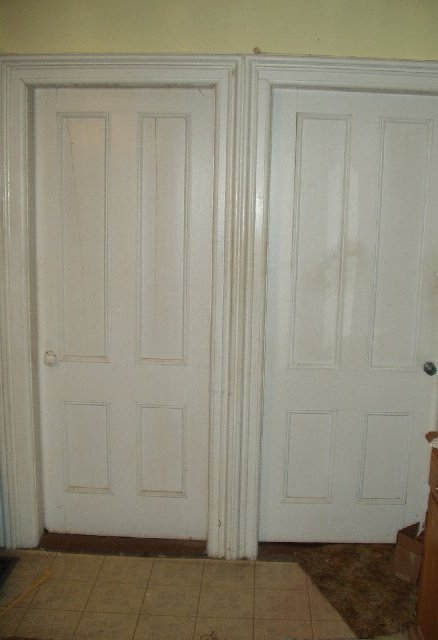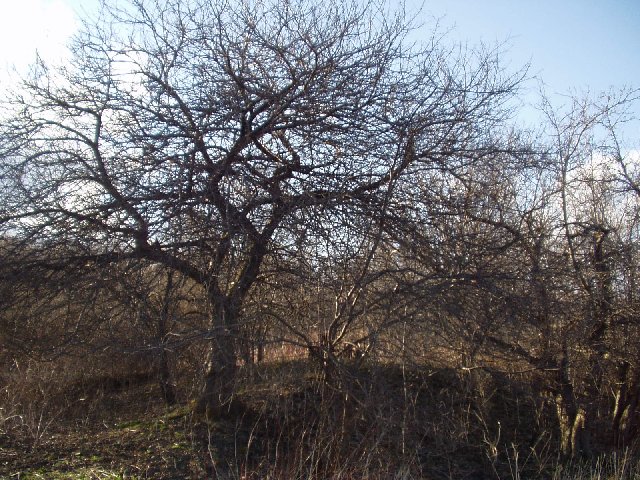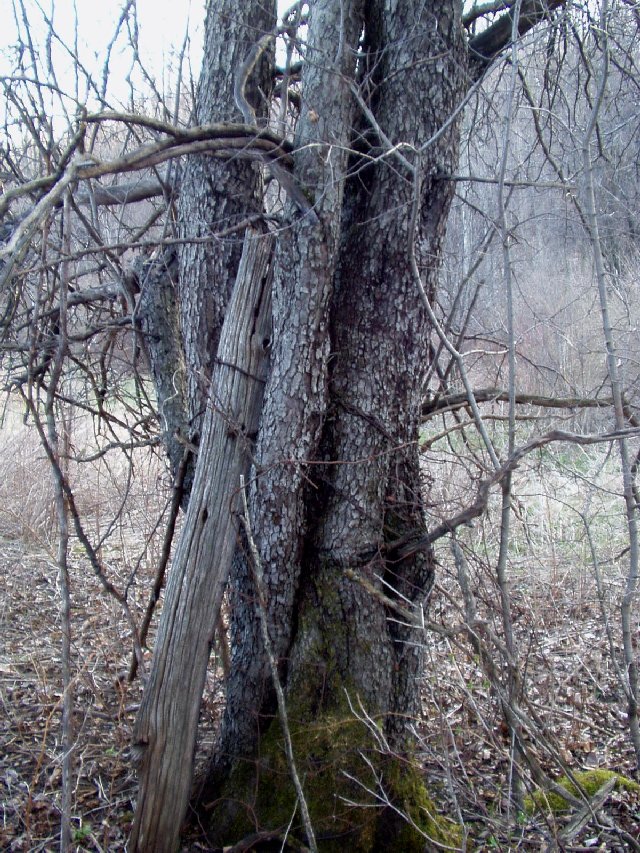
There is a cabinet built into the living room wall, and this was the back side of its door. Note that it is made of quarter-sawn red oak.
Bob Tilden:
I visited the Moreland farm the spring of 2008, and spent time with Ray Swisher, who grew up there. His parents Orvis and Eva bought the farm from our family in the early 1940s, and lived there until the end of 2007. In the early years the family operated a diary farm.
It should be noted that A.J. died in the late teens and Angeline died in the early 1920s. Even though the property remained in the family, I haven't heard what use was made of it or who occupied it during the twenty years between A.J.s death and the sale. For that matter, A.J. was listed as living in Elmira at the time of his death, and had built quite a house for the family on West Gray Street.
In 1943, at the time of the sale, the house was standing empty and in disrepair. It was alleged that it was haunted, but most likely the ghost was actually a squatter who had taken up a surreptitious residence.
The basement has a ditch for water, and the upstairs was half bedrooms and half attic. The farm had outdoor plumbing until 1955. A 20- foot dug well provided good water for the house, but the well for the barn had sulphur water. The barn faced west, towards the hill that rises behind the house. Animals were, of course, on the ground floor, which was set into the hillside to a good degree. An earthen ramp led to the floor of the hay maw above the animals.
The original property was 187 acres, which extended from almost the crest of the hill behind the house, down across the road and the creek beyond. I went up the hill beyond the creek for a short way. An early 1900s agricultural census reported an extensive orchard on the farm, and there were still many apple and pear trees on the hill behind the house. They had gone wild during the period of abandonment, but Mrs Swisher trimmed several trees back into good production in the late 40s.
There were three fields behind the house which had grown to brush because of inactivity. The family cleared them for crops and for pasture. Remember that A.J. acquired this farm for its timber, and that it was at this place that he became rich, cutting trees for lumber rather than as cordwood for Corning Glass; he used the lumber to build houses in Elmira for sale and rent. When the trees were gone, the land was prepared for farming.
Many of the properties were passed down to his children, and remained in the family for years. and Jim Dann recalls in the 1940s accompanying Laurance Dann on trips to deliver dairy goods and to collect rents.
Below are pictures I took at the visit. Sorry, they are short on substance and long on wistfulness. Remember, it has been almost 100 years since "our family" lived there.


Pictures couldn't capture the feelings I had as I stood at the crossroads of the house, in the hall area just outside of the kitchen. For a moment I tried to imagine the daily comings- and- goings of the family... Mom and Dad and 5 chidren ranging through the teen years. They lived here, they farmed here, and they operated a business from here.



I was standing in a brush-lot no different than any of a million I have stood in, yet this ground was once an intimate part of our ancestor's lives. The river of time is always at our doorstep; it is always the same river but the water is always changing. Its past moods are a matter of fading recollection and its future a matter of mere speculation...